With fall and winter rapidly approaching and the weather soon to cool down, the question “should I blanket my horse?” Is likely starting to sneak into your head. There is a lot to think about regarding blanketing. You must decide on a type of blanket and its thickness, when you should start blanketing, how to tell if your horse even needs a blanket, how to measure a horse for a blanket, and so much more!
Don’t worry though! I’m here to help break it all down for you to help make blanketing your horse this winter much easier.
In this post I will cover:
- How to tell if your horse needs to be blanketed
- At what temperature should I blanket my horse?
- Are there certain breeds of horses that need to be blanketed?
- What styles of horse blankets are there?
- How to measure your horse for a blanket
- My favorite horse blankets
How Can I Tell If My Horse Needs to be Blanketed?
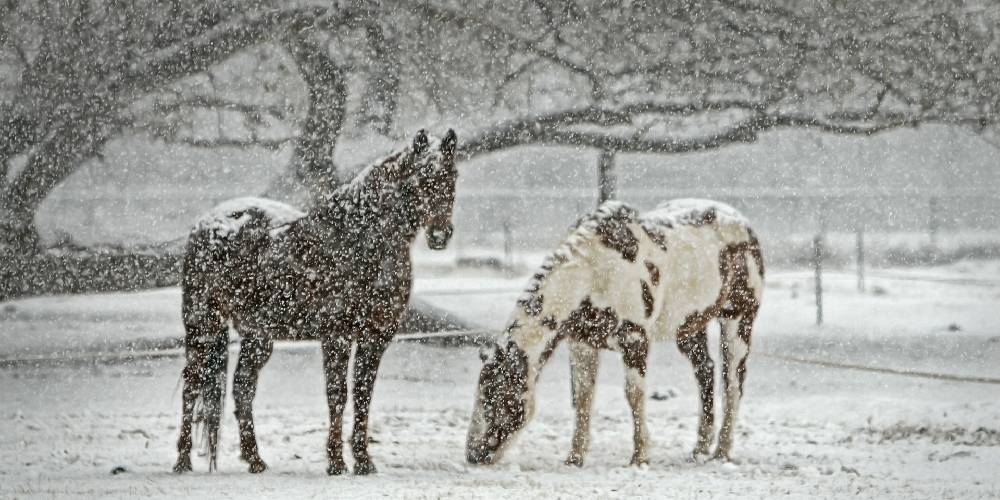
I live in the hot sunny desert in Arizona, so our winters are relatively mild compared to most other places. Horses here often can go ‘un-blanketed’ all winter long without any issues! Even though where I live rarely sees snow, some horses still need to be decked out in all their winter gear regardless of how mild our winters are. It totally depends on the horse!
The winter months can be very cold and uncomfortable for many horses. Looking for these signs can tell you whether or not your horse needs to be blanketed this winter.
If you own a senior horse who struggles to put weight on, blanketing them during the winter is a MUST! Shivering and trying to stay warm uses up a lot more calories than your poor old pony needs to burn. Giving them the comfort of a warm blanket in the winter will help them to keep weight on and stay as comfortable as possible during the cold, miserable months.
Sometimes, desert breeds like the Akhal-Teke and the Arabian struggle with the cold winter months. These horses are meant to live in hot desert climates, so cold and snow can be hard on these guys. Blanketing these horses is sometimes the best way to keep them comfortable during the cold winters.
If you ever notice your horse shivering, it’s likely that they need to be blanketed. Horses shiver just like people do when they get very cold. Though shivering isn’t seen all that often, when you do see it, getting that horse warm and comfortable should be your priority.
Some breeds, like the Thoroughbred, the Arabian, and the American Saddlebred, often struggle to grow warm winter coats. It might be below freezing out and these horses still look almost like they did in summer! If your horse doesn’t hardly grow a winter coat and temperatures drop, consider blanketing them to help them stay warm, dry, and comfortable all winter long.
Horses that are shown during the winter months are often clipped to make them more visually appealing in the show ring, and sometimes they’re clipped just to make exercise more comfortable. If you ever decide to clip your horse during the winter months, you must blanket them to replace that winter coat you took away.
If your horse is at a healthy weight and doesn’t struggle at all to grow a nice winter coat, blanketing is likely optional for you. Some horses can go even in snowy climates without blankets depending on the length and thickness of their winter coat.
Some horses can go all winter long without blankets and sometimes they are necessary to keep horses happy healthy and comfortable. Every horse has its own needs!
At What Temperature Should I Blanket My Horse At?
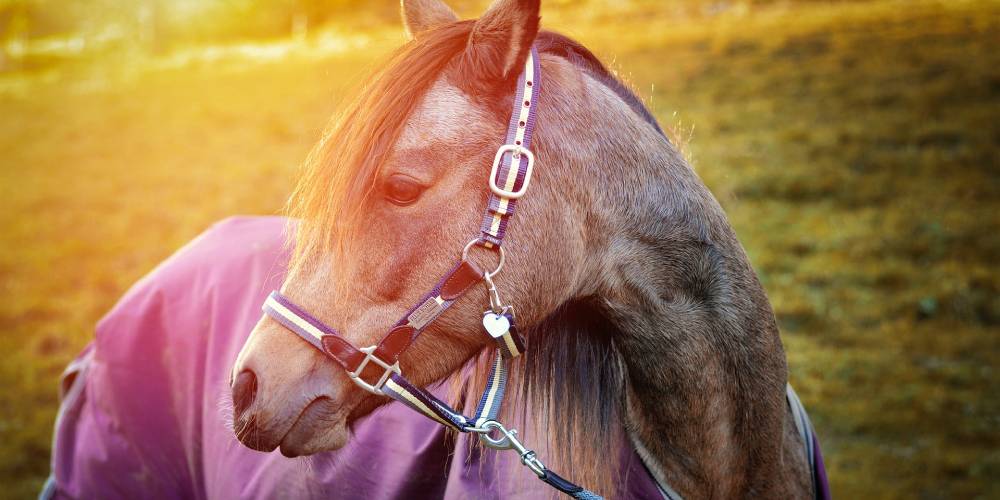
In general, horses should be blanketed when the temperature drops below 45 degrees Fahrenheit (7 degrees Celsius). Usually, it is around this temperature that the cold can start to become uncomfortable for the horses that struggle during the winter months.
If the temperature is higher than 45 degrees Fahrenheit (7 degrees Celsius) but there is a lot of wind, there is no sunlight, or it’s raining, I would consider blanketing your horse anyway.
This table may help!
| Temperature | Body Clipped Horse | Horse with Natural Coat |
| 50-60 degrees Fahrenheit (10 to 15 degrees Celsius) | Stable Sheet/Light Blanket (100g) | No Blanket Necessary |
| 40-50 degrees Fahrenheit (5 to 10 degrees Celsius) | Light Blanket/Medium Blanket (100g-200g) | Stable Sheet/Light Blanket (100g) |
| 30-40 degrees Fahrenheit (0 to 5 degrees Celsius) | Medium Blanket/Heavy Blanket (200g-250g) | Medium Blanket (200g) |
| 20-30 degrees Fahrenheit (-5 to 0 degrees Celsius) | Heavy Blanket/X-Heavy Blanket (250g-350g) | Heavy Blanket (300g) |
| Below 20 degrees Fahrenheit (below -5 degrees Celsius) | X-Heavy Blanket (350g-450g) | Heavy Blanket/X-Heavy Blanket (350g-450g) |
Are There Certain Horse Breeds That Need to be Blanketed?
Yes and no! Though the requirement of a blanket varies from horse to horse, there are often trends where most members of a certain breed will require blankets where another breed will not.
| Horse Breeds Who Usually Need to be Blanketed | Horse Breeds Who Usually Can Go Without a Blanket |
| Arabian | Mustang |
| Thoroughbred | Quarter Horse |
| Akhal-Teke | Shetland Pony |
| American Saddlebred | Clydesdale |
| Morgan | Icelandic Pony |
What Styles of Blankets are There?
There are SOOOO many blanket styles to choose from! There are thin blankets, thick blankets, blankets made for indoors, blankets made for outdoors, and so much more! You can even find all sorts of blankets that fasten on differently than others too! The world of blankets is HUGE!
So, what are the main styles of blankets I should know about?
Stable Blankets
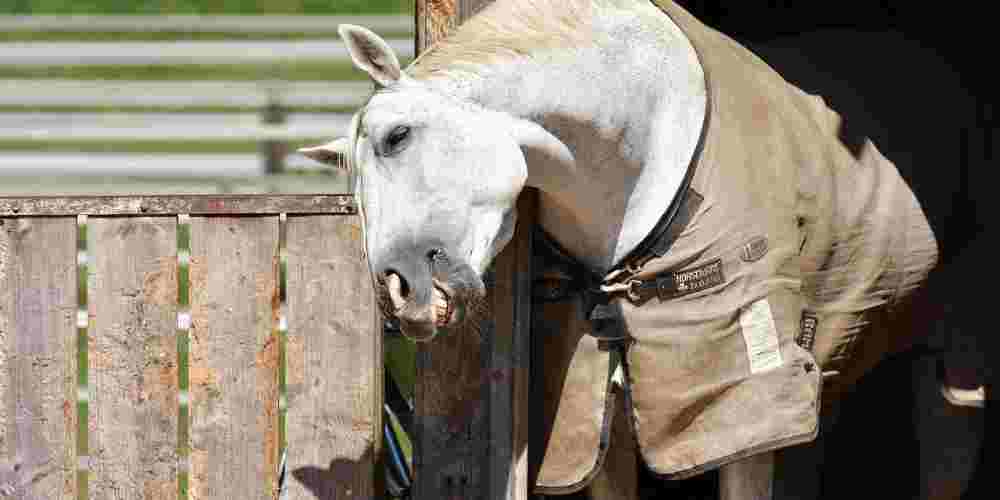
A stable blanket is a blanket meant to be worn only in the barn or stable (hence the name). Because they are not intended for use outdoors, these blankets are usually not water proof.
Stable blankets are on the thicker side and help to keep the horse warmer when in their stall. Sometimes, horse owners will put stable blankets on underneath a waterproof blanket so their horse is extra warm when blanketed and let outside.
If you are keeping your horse indoors for a majority of the winter, or you want two separate blankets (one for use indoors and one for use outdoors) a stable blanket may be a good option for you.
Stable Sheet
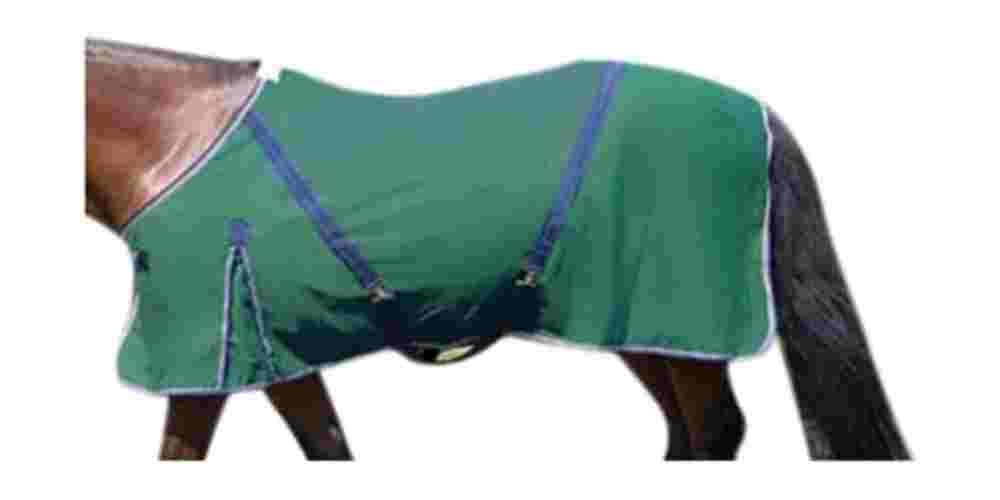
A stable sheet is very similar to the stable blanket. Both are intended for indoor use only, and both help keep your horse warmer during the colder months. The main difference between these two is the difference in thickness.
When you think about bedding that you use in your home, you know that a sheet is a very thin piece of bedding. If you compare a sheet to a blanket or duvet, it is obvious which one is thicker. This is the easiest way to remember the difference. Stable sheets are thinner, and stable blankets are thicker.
If your horse is not too terribly affected by the cold, but you want to give them a little more warmth during the nights, a stable sheet will be your horse’s best friend.
Turnout Blankets
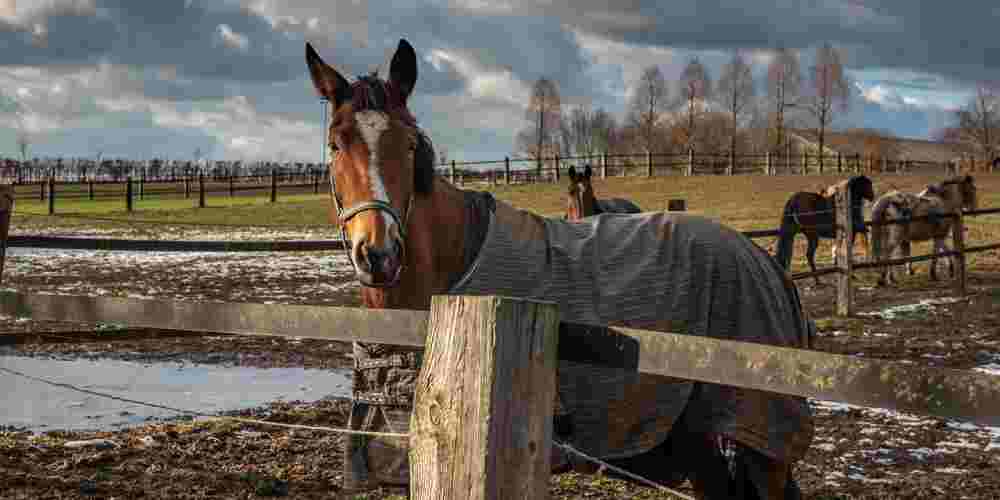
Turnout blankets, like stable blankets, are blankets made from thick, warm material. Turnout blankets are intended to be used when a horse is going to be let outside, but need the extra warmth that a blanket can offer them.
These blankets are dry and warm on the underside, thick and heavy in weight, with a thinner waterproof layer on the outside. This is to help keep your horse warm and dry at the same time. The last thing you want to happen in winter is for your horse to get cold and wet! So be sure that the blanket you are turning your horse out in is truly waterproof!
Most turnout blankets will have some sort of marker or tag on the outside that tells you whether or not the blanket is water proof.
I personally prefer turnout blankets as opposed to stable blankets. Turnout blankets keep your horses warm and dry and they can be worn indoors or outdoors. If you have your horse in a turnout blanket, you never need to bother with the blanket rotating that stable blanket users deal with.
Please ensure your horse’s blanket is waterproof before letting them out in the snow, rain, or mud!
Turnout Sheet
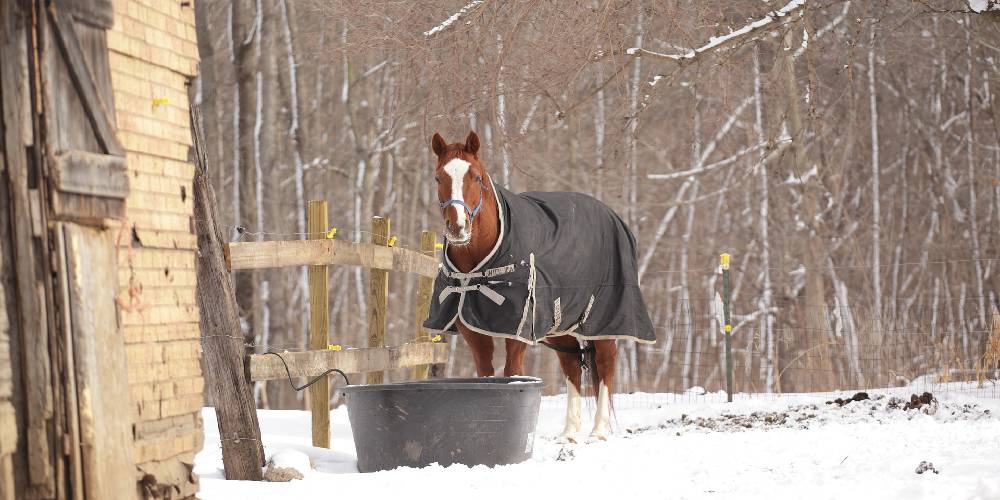
A turnout sheet is very similar to a stable sheet, it’s just intended for outdoor use! Many people use turnout sheets just as a waterproof layer over their horse to help keep them drier in the snow or rain. Other times, turnout sheets are used over top stable blankets so horses can be turned out without having to remove their stable blanket.
Cooling Sheets
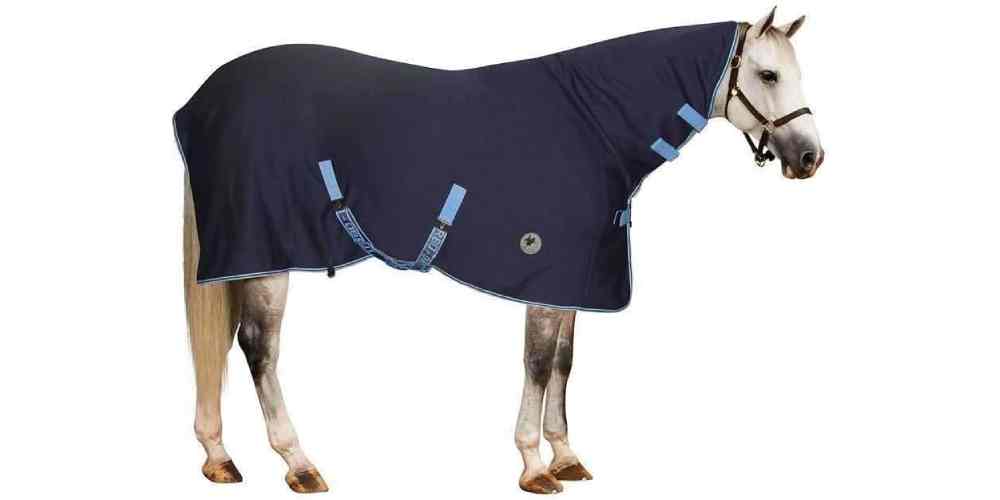
A cooling sheet is a very thin blanket style (very similar to the stable sheet) intended to be used on your horse immediately after exercise.
When a horse does a strenuous workout, they can work up quite a sweat. In winter, if your horse is not slowly cooled down, they can catch a chill!
To prevent your horse from catching a chill, use a cooling sheet on your horse after your ride to help slow down their cooling as well as help to wick away any moisture, thus preventing a chill.
These blankets are usually made of thin cotton, fleece, or a similar warm and fuzzy material. Some riders will even put the cooling sheet on over their tack and ride their horse to cool them down too!
How Do I Measure My Horse For A Blanket?
Horses and horse blankets come in all shapes and sizes imaginable. Ensuring you have a well-fitting blanket for your horse is important not only for your horse’s comfort, but also their safety.
A blanket that is too small can be tight and restricting which can cause rubbing and even sores making your horse feel very uncomfortable. A blanket that is too big can cause your horse to step on the blanket or on the straps connected to the blanket. This can result in your horse getting stuck and panicking which makes for a very dangerous and scary situation!
Follow this simple guide and you should easily be able to find a perfect-fitting blanket for your horse or pony!
Measure from the Middle of the Chest to the Point of Buttock
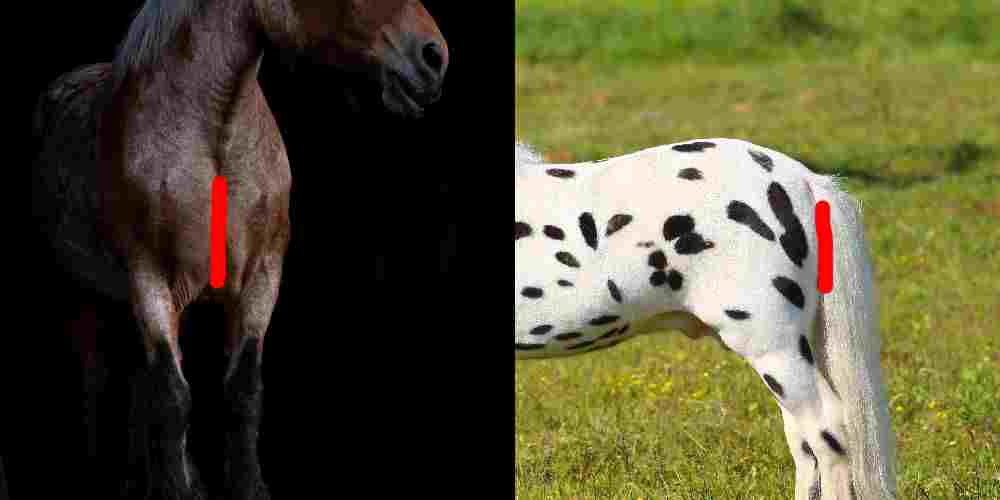
Take a tape measure and put one end of it at the center of your horse’s chest (you may need a helper for this). Then, run the tape measure all the way to the point of your horse’s buttock.
Be sure to measure your horse in inches rather than centimeters! Most companies list their blanket sizes in inches, so using the correct unit of measurement is crucial! (if you only have a tape measure that goes by centimeters, just convert your measurement to inches by multiplying the number of centimeters by 0.3937 to get a rough idea on the number of inches you measured!)
Once you have this measurement, make sure to mark that number down. Most blanket sizes go off of this number alone!
When I get a Blanket in the Right Length, Does That Mean it Will Fit my Horse Perfectly?
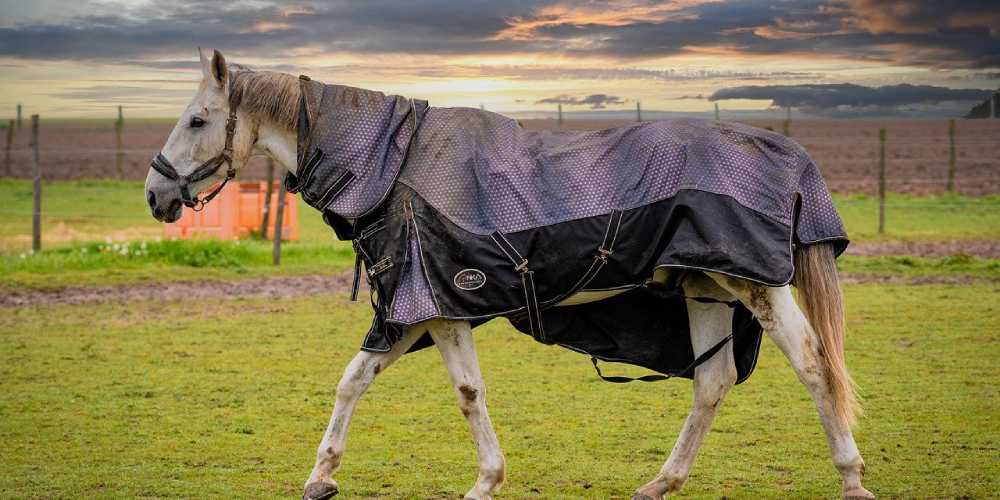
Most of the time when you get a blanket in the correct length, the rest of the blanket fits your horse perfectly. If you are still worried that the blanket you purchased is fitting too loose or too tight, use my rule of 4’s to ensure the blanket you have is a good fit:
The Rule of 4’s:
My rule of 4’s is an easy way to remember how to make sure your horse’s blanket is fitting properly. I call it the rule of 4’s because there are 4 things to check and each of these things need to have a 4 inch gap between it and your horse.
1. Leg Straps:
Your horse should have a 4-inch gap between them and their leg straps. (if you can’t think of how wide 4 inches is, just think one hand-width) Any more than 4 inches poses a risk of your horse getting tangled in their straps. Any less than 4 inches can cause your horse to become irritated or restricted by the tightness of your straps.
2. Surcingle Strap:
Again, with the rule of 4’s you want to make sure that there is around a 4-inch gap between the surcingle strap and your horse’s belly. Any larger could cause your horse to catch their leg in that strap, and any smaller can cause irritation or restriction, none of which we want!
3. Cross-Belly Straps:
Same as the surcingle strap, make sure that there is no more than 4-inches between your horse’s belly and the cross belly straps. Any tighter or looser can cause safety issues!
4. Neck Opening
A horse with a neck opening that is too loose will cause the cold weather to seep in under the blanket and can pose potential safety risks. A horse with a neck opening that is too tight will find it difficult to put their head down and will struggle with the restriction the blanket is causing. You should have no more and no less than a 4-inch gap between your horse and their blanket in the neck opening.
My Favorite Horse Blankets
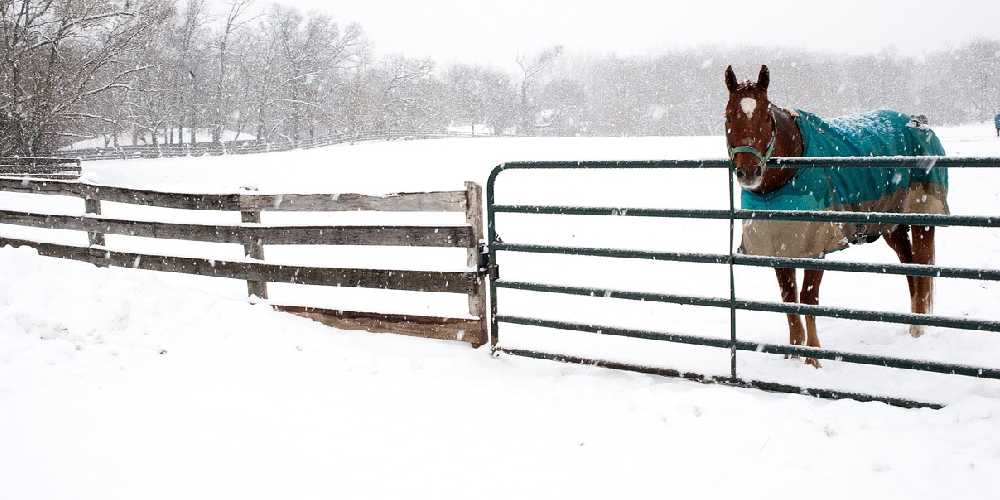
For those of you on the market for a horse blanket, I figured I should share a few of my favorite blankets with you to give you some options to choose from.
I’ll share two top recommendations per style of blanket that I discussed in this post!
Stable Blanket
Because my horses are in the barn when the weather is really cold, I mainly keep stable blankets on them, and switch them into turnout blankets when they go outside. My Thoroughbred mare Berkley barely grows a winter coat, so her blanket is a little thicker than the blankets I use on my other horses.
I like to blanket my senior Arabian gelding (Bronze) in winter to help keep him more comfortable. He grows a decent winter coat so I like to use this blanket on him. I chose this blanket for him because it isn’t too heavy/thick (it’s only 100g), and the polyester material makes it easy to keep clean (he is a very messy boy).
Berkley needs a blanket that is quite a bit thicker than Bronze’s. Bronze turns into a wooly mammoth in winter while Berkley literally looks the same all year round. Because of this, I like to use a blanket on Berkley with a weight between 150g and 250g to help keep her warmer during the coldest time of year.
The blanket I currently have for Berkley is this stable blanket. The thickness of this blanket is at 200g making it just warm enough for Arizona’s relatively mild winters.
Stable Sheet
One of my client’s horses, Jasper, uses a stable sheet in winter as opposed to a blanket. The stable sheet she ordered was this one. (The brand of the sheet is TuffRider) Jasper at the time was a little overweight and his heavier blanket combined with his extra…. padding… made him too hot. This sheet offered us the perfect in-between. Without a blanket he was too cold, and with a blanket he was too hot making this thin sheet the best option for him.
There are many other styles and brands of stable sheets on the market. One of my favorite stable sheets that I have used is this one. Not only does it look great, it also fits well, is made of high-quality materials, and has great reviews. It was the perfect sheet for my old horse Crossfiire and helped to keep him warmer on super cold days.
Turnout Sheet
Like stable sheets, turnout sheets are a very thin style of blanket, but unlike stable sheets, turnout sheets are intended for outdoor use.
My old horse Johnny needed to be blanketed at all times during the winter because of his old age and poor body condition. I often used a light turnout sheet overtop of his stable blanket so I didn’t need to switch blankets out. The turnout sheet I used was this one (the SmartPak brand). I loved having the light waterproof layer over his stable blanket. It helped to keep him and his stable blanket clean and dry.
Though I personally haven’t purchased this sheet, many of the horses at a barn I used to work at all had the same one. It was always a very easy sheet to put on, it fit all the horses well, and it was waterproof which made the world of a difference when we started to get cold winter rains.
Turnout Blanket
My old horse Cisco, who now is boarded at my barn, uses this turnout blanket by Weaver Leather. This blanket is a 180g weight making it a nice medium-light blanket. Cisco grows a decent winter coat, but he still shivers at night, so giving him a little extra warmth makes him a lot more comfortable.
Another client of mine has a mare named Bella. Bella uses a turnout blanket that has a belly band for added warmth, which helps to keep her belly warm and dry if she decides to lie down or roll. Bella was a rescue out of a kill pen, so she was emaciated when she came to my barn. It was already November when she arrived, so this blanket was perfect for her. It is super thick and warm and it helped keep her comfortable and cozy all winter long while we brought her back to health.
Cooling Sheet
My lesson horses need to be cooled down with cooling sheets after strenuous lessons. My favorite cooling sheet is this one. Not only does it look nice, but it also does a great job of wicking away sweat and preventing them from getting a chill.
If you prefer to not have a hood on your blankets, then this one is definitely my next best option. I love the warm, soft material on this cooler. It does a great job of preventing a chill and it comes in such a fun color!
